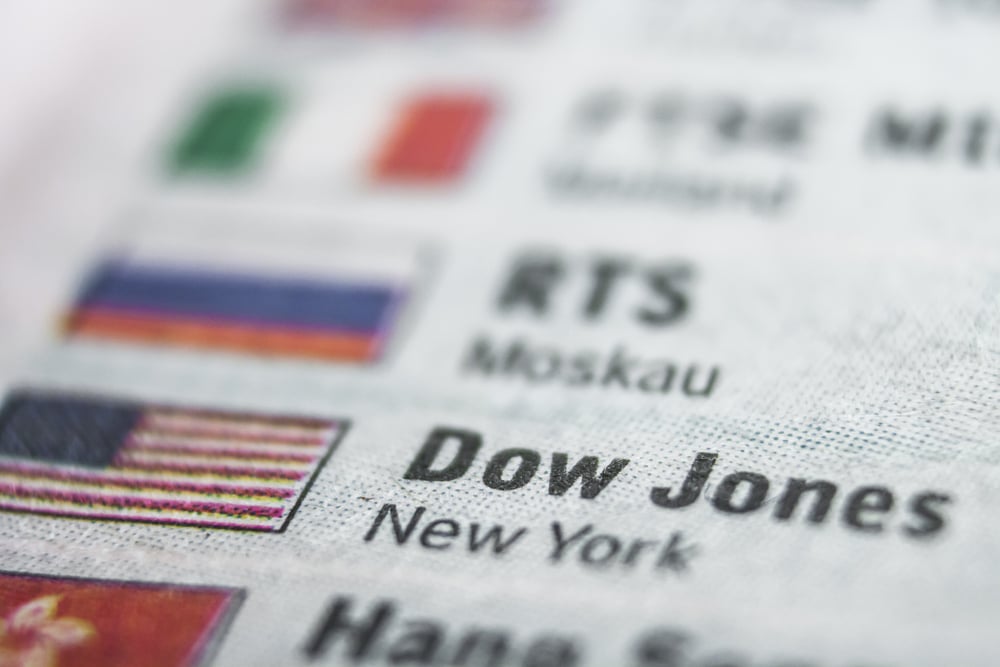
There are no two ways about it: the Dow Jones has been enjoying some dizzying highs and for the last few years now besides. A look back at November 4, 2016, reveals that the S&P 500 was just coming off its ninth consecutive day of losses, a point that hadn't been seen prior to that since December 1980. The Dow itself, meanwhile, closed at 17,888.28.
Fast forward just over three years and the Dow has seen multiple closing records; On January 4, 2018, the Dow closed at a record high of 25,000. Just 12 days later, it closed at a new record high of 26,000. “Multiple record-breaking highs” might be the best way to describe the Dow in the waning years of the 2000-teens, but new word out of Morgan Stanley suggests that the Dow's happiest times may be behind it.
The Roaring Twenties Again, But Down?
Morgan Stanley's chief cross-asset strategist, Andrew Sheets, offered up some calculations that will look downright depressing to anyone who is actively saving for retirement. The standard investor portfolio—which is typically 60 percent stocks and 40 percent bonds—will offer a comparatively anemic 4.1 percent return over the next 10 years if Sheets' calculations hold true.
This is actually on par with the lowest such results seen in the last 20 years, and it's also a comparative rarity in the field. Only four percent of rolling 10 year periods going as far back as 1950 could boast just a 4.1 percent return, reports note, which means that Morgan Stanley is actively expecting some of the worst times in the bond and stock market that we've seen in decades.
The motivation behind the pessimistic outlook does make some sense, however; essentially, the Dow has been burning too hard for too long, and that's going to require some necessary slowdown. The combination of fiscal policy and economic conditions—central bank easing and the resulting flood of cash into stock and bond issues coupled with a job market that's been seeing some real gains—have added up to produce a bull market for stocks that's run longer than any other except one. This
bull market recently passed the 10-year mark, and it's easy to look at such expansion and figure what goes up must eventually come down.
Additionally, individual stock valuations are near historical highs as it is, some point out, which means generating further expansion will take a lot more cash. Since a lot of that cash is already committed, where will the cash to fuel further expansion come from?
It's easy to dismiss such a report, especially with the S&P 500 offering a 13.8 percent annual return over the length of that bull market. The S&P's trailing price-earnings ratio, which has been on the rise as well up to 19.6 from 16.9, is also seen as a bad sign for future growth. 19.6 is considered elevated by certain market experts, and with a 10-year bull market running alongside it, it's not hard to see why.
Yet a look at the bond market suggests that a similar overheating may be in the making therein as well. The 10-Year Treasury Yield in the US, seen as a benchmark figure, has fallen roughly 50 percent over the last 10 years, going from 3.8 percent in 2010 to around 1.77 percent. Throw in the results of the iShares 20+ Year Treasury Bond ETF—which has better than doubled in the same time frame—and the results speak somewhat for themselves.
The cyclical nature of investing does presume that, when valuations go up, they must eventually come down, and vice versa. A major upside run like the one we've seen over the last decade does suggest a cooldown period must be in the offing at some point, if for no other reason than to winnow out the lesser companies. While it doesn't necessarily have to be a one-for-one sort of cooldown—a 10-year bull market isn't inevitably followed by a 10-year bear market—nothing expands forever. Expecting, and preparing for, a slowdown of some kind likely won't be a bad move going forward, though Morgan Stanley being able to project conditions 10 years forward is also something of a stretch.
Before you make your next trade, you'll want to hear this.
MarketBeat keeps track of Wall Street's top-rated and best performing research analysts and the stocks they recommend to their clients on a daily basis.
Our team has identified the five stocks that top analysts are quietly whispering to their clients to buy now before the broader market catches on... and none of the big name stocks were on the list.
They believe these five stocks are the five best companies for investors to buy now...
See The Five Stocks Here
Enter your email address and we'll send you MarketBeat's list of seven best retirement stocks and why they should be in your portfolio.
Get This Free Report
Like this article? Share it with a colleague.
Link copied to clipboard.